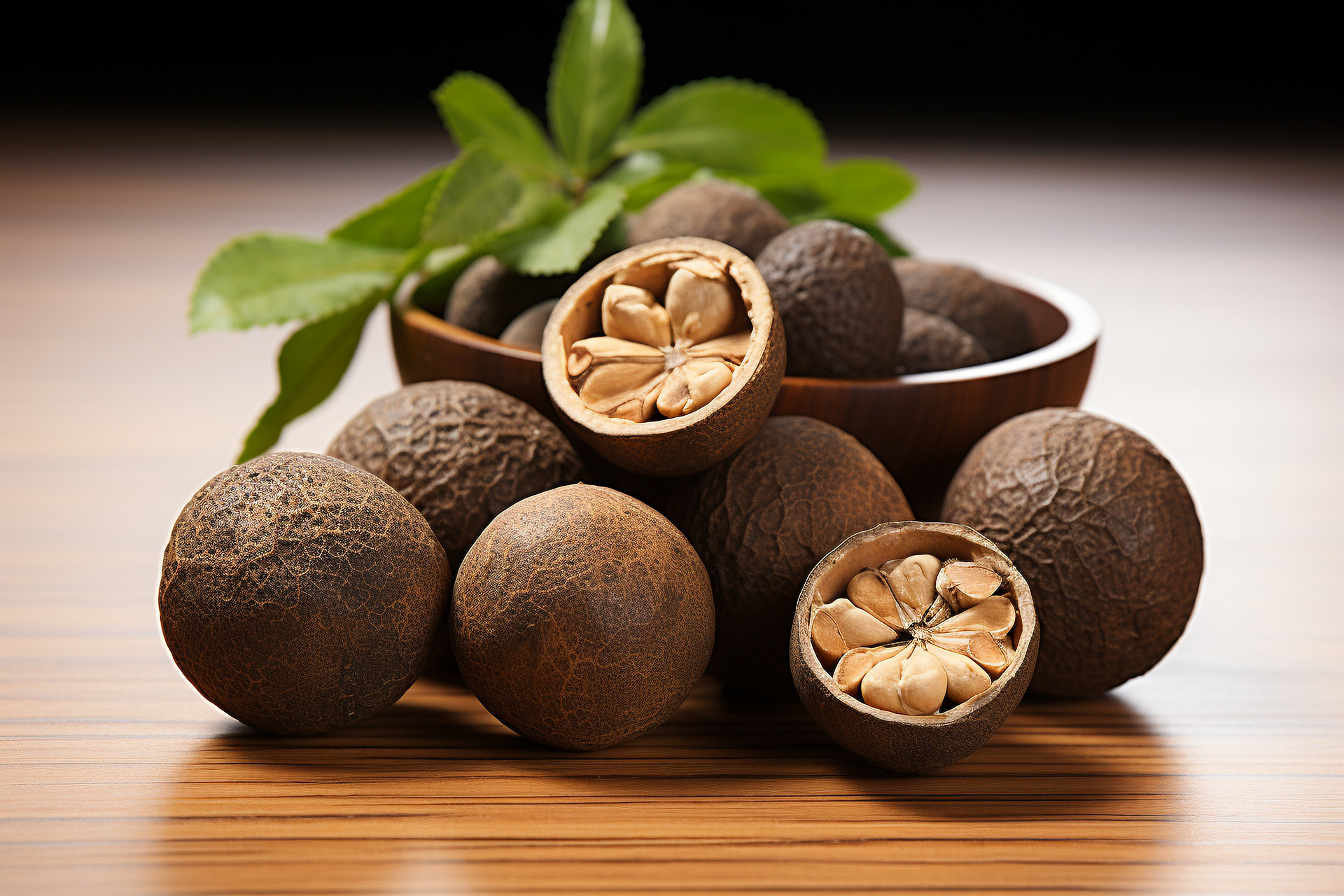"Compendium of Materia Medica" records: "Ginseng is the number one qi tonic, and Sanqi is the number one blood tonic. They have the same taste and similar effects, so they are called the most precious tonics in medicine." Sanqi is indeed a unique flower in hemostatic drugs, with the characteristics of stopping bleeding without leaving stasis and dispersing stasis without damaging the body. Its medicinal value also makes the price of Sanqi fluctuate, with counterfeit and inferior products mixed in. This article briefly introduces Sanqi from the aspects of clinical application, origin, identification of counterfeits and inferior products, and product specifications, hoping to help everyone make better choices when needed.
Overview of Functions
Sanqi is the dried root and rhizome of the plant Panax notoginseng, belonging to the family Araliaceae. It has a sweet and slightly bitter taste and a warm nature. It enters the liver, stomach, heart, and lung meridians.
It has the functions of dispersing stasis and stopping bleeding, and relieving swelling and pain. It can stop bleeding and promote blood circulation. It is widely used in internal and external bleeding, such as hemoptysis, hematemesis, metrorrhagia and metrostaxis, and rectal bleeding. It can stop bleeding and disperse stasis without damaging the body. It can also be used for relieving swelling and pain. It is one of the raw materials for the famous "Yunnan Baiyao" both in China and abroad. Its active ingredients, Panax notoginseng saponins and Panax notoginseng flavonoids, can significantly increase coronary blood flow, dilate blood vessels, lower blood pressure, and fight against atherosclerosis.
Origin
Sanqi was first recorded in the "Compendium of Materia Medica" and has a history of more than 500 years as a medicinal herb. Li Shizhen recorded: "It grows in the deep mountains of Nandan and other states in Guangxi. The roots are dried and become yellowish black. The compact ones resemble white and long ones resemble dry Rehmannia. They have nodes and taste slightly sweet and then bitter, somewhat similar to the taste of ginseng." Nandan County in Guangxi Province, known as Qingyuan Prefecture at that time, was the main production area of Sanqi.
It can be seen that Guangxi was the main production area of Sanqi during the Ming Dynasty.
Tianzhou Prefecture is located southwest of Qingyuan Prefecture. It not only produces Sanqi, but also was the main distribution center of Sanqi for a long time. Sanqi from Guangxi had to pass through Tianzhou when it was transported to other provinces, which is why it is also called "Tianqi" or "Tian Sanqi".
In the "Records of Kaihua Prefecture" during the Qing Dynasty, it was recorded that Sanqi was produced in Yunnan and sold nationwide. Until the Republic of China period, Guangxi was considered the authentic production area, as recorded in "Distinguishing the Production of Medicinal Materials" which stated "produced in Guangxi Tianzhou as the authentic area".
However, Wenshan in Yunnan gradually surpassed Guangxi and became the largest and highest-quality producing area for Sanqi.
Wild Sanqi is now extinct (if a seller claims to sell wild Sanqi, they are definitely a fraud), and medicinal Sanqi is all cultivated. Wenshan in Yunnan and Tianyang in Guangxi are the main production areas of Sanqi, with large-scale cultivation areas. There are also small-scale introductions in Sichuan, Guangdong, Hunan, Guizhou, Fujian, Jiangxi, Zhejiang, and other provinces.

Characteristics of the Medicinal Material
The entire plant of Sanqi used in commerce is divided into three parts: the main root, which is called "Sanqi Head"; the rhizome of Sanqi, called "Jiankou"; and the root branches of Sanqi, called "Jintiao".
Main root:

It is conical or cylindrical in shape, with a gray-brown or gray-yellow surface, intermittent longitudinal wrinkles, and stem scars at the top of the root and nodular protrusions around it. It is heavy and firm, with a gray-green, yellow-green, or gray-white color on the cross-section, and the wood is slightly arranged radially. The surface of the medicinal material is smooth and yellow-green (due to the collision during collection and processing), and the body is hard, known as "copper skin and iron bone". It has a slight smell and a bitter and sweet taste.
Copper skin and iron bone
Rhizome (Sanqi rhizome):
It is irregularly wrinkled or striped, with several obvious stem scars and ring lines on the surface, and the center of the cross-section is gray-green or white, while the edge is dark green or gray.
Root branches (Sanqi root branches):
They are cylindrical or conical, 2-6cm long, with an upper diameter of about 0.8cm and a lower diameter of about 0.3cm.

Image source: Compiled by Gao Tianai.
Authenticity Atlas of Chinese Medicinal Materials [M]. 2012
Identification of Counterfeits and Inferior Products
Chrysanthemum Sanqi:
Also known as "tu Sanqi," it is the root of the chrysanthemum Sanqi plant, a member of the Asteraceae family. It contains chrysanthemum Sanqi alkaloids, which have hemostatic effects. Short-term use in high doses can cause widespread acute hepatitis, while long-term use in small doses can cause liver necrosis and hepatic veno-occlusive disease.
It has a similar appearance to Sanqi, forming a fist-like lump, with a gray-brown or yellow-brown surface. Fresh specimens are often purplish red. It has nodular protrusions throughout and is solid in texture. The cross-section is light yellow with a clear medullary region, and the taste is mild and then slightly bitter.

Image source: Compiled by Gao Tianai.
Authenticity Atlas of Chinese Medicinal Materials [M]. 2012
Jingtian Sanqi:
Also known as "fei cai" or "tu Sanqi," it is the root or whole plant of the Crassulaceae plant Jingtian Sanqi. It has a sweet and slightly sour taste and a neutral nature. It can stop bleeding, disperse stasis, nourish blood, and calm the mind. It is commonly used in clinical practice for gastrointestinal bleeding, pulmonary bleeding, bleeding disorders, gynecological bleeding, injuries, and trauma, as well as palpitations and insomnia. It has been included as a local standard for the use of Jingtian Sanqi.
It is short and segmented in appearance, and leaves, stems, inflorescences, and small yellow flowers are visible, making it easy to recognize.

Image source: Edited by Zhang Guijun.
Color Atlas of Refined Chinese Medicinal Herbs [M]. 2016

Image source: Edited by Liu Shaogui.
Identification and Application of Clinically Used Chinese Herbal Medicines [M]. 2015
"Teng Sanqi":
It is the root of the Lamiaceae plant Teng Sanqi.
| 1 2 > >> >>|











